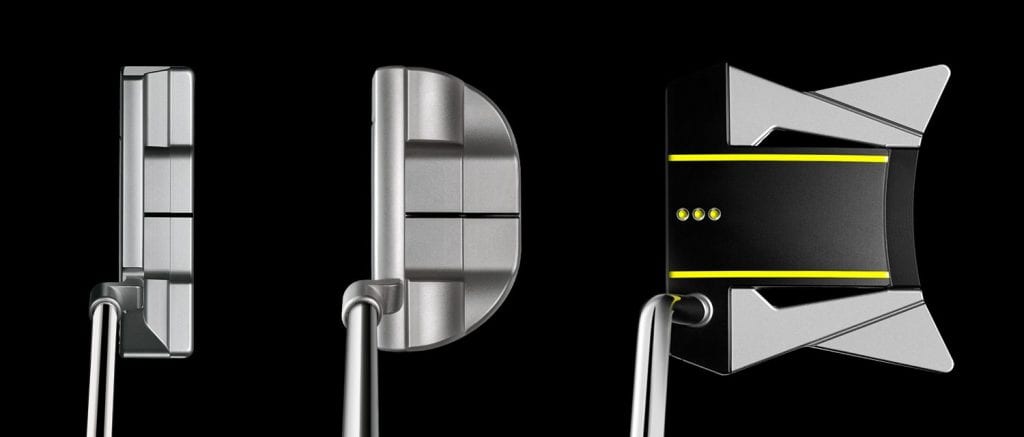A Woman Golfer’s Guide to Blades, Mallets & More
We all know the feeling — standing over a four-footer, hoping our trusty old putter won’t let us down. But here’s the truth: the putter is the most-used club in your bag, and if it doesn’t suit you, it could be holding you back.
Finding a putter that matches your stroke, posture, and preferences can do wonders for your game — and your confidence. Let’s explore the different types of putters and what to look out for as a woman golfer.
1. Blade Putters: For the Feel Player with an Arc Stroke
What’s the appeal?
Blade putters have a sleek, traditional shape — the sort you’ll see in vintage photos or in the hands of players who trust their feel. They’re all about precision, and they give loads of feedback on each putt.
Best for:
- Players who swing the putter on an arc, rather than straight back and through
- Golfers who like to feel every roll
- Faster greens, where subtle touch matters more than forgiveness
Women’s tip:
If you’re on the shorter side or naturally have a bit of arc in your stroke, a blade putter between 32″–33″ could be spot on. Just bear in mind: blades can be less forgiving, and they usually don’t have the bold alignment aids you’ll find on other styles.
2. Mallet Putters: For Confidence, Stability & a Smoother Roll
Why so popular?
Mallets are bigger and often face-balanced, which helps keep the putter square through the stroke. They also come with generous alignment guides — ideal if you’re the sort who likes a visual cue when aiming.
Best for:
- Golfers with a straight-back, straight-through stroke
- Anyone who’s struggled with distance control or lining up
- Slower UK greens, where a heavier head can help with tempo
What about compact mallets?
If a full-sized mallet feels bulky or overwhelming, compact mallets offer a brilliant middle ground. They retain much of the forgiveness and alignment help of a traditional mallet, but with a sleeker profile that’s easier to control. Many women golfers love the balance they provide — especially those who want stability without sacrificing feel or elegance at address.
Women’s tip:
Mallets are often a great match for women, particularly those with smaller builds or a lighter touch. The extra weight can give your stroke a steadier rhythm, and the alignment features can take some pressure off your eyes — especially on longer putts.
3. Toe-Hang vs. Face-Balanced: Matching Tech to Your Stroke
You might’ve heard these terms in the pro shop or read them online — but what do they actually mean?
- Face-balanced putters want to stay square to your target, ideal for a straight stroke.
- Toe-hang putters naturally open and close, which suits an arcing stroke.
How to check your style:
Prop your phone up and record a few putts from above. If your putter swings more in a straight line, you’re likely a face-balance candidate. If it arcs, toe-hang might feel more natural.
Women’s tip:
Don’t assume all women have the same stroke — we don’t. If you have shorter arms or a narrower stance, your putter may naturally arc. That’s where a toe-hang model can really help you stay in sync.
4. Shaft Placement: Small Change, Big Feel
Where the shaft connects to the head affects how the putter behaves.
- Centre-shafted putters work best for upright players with minimal rotation in their stroke.
- Heel-shafted putters (the more common style) suit players with some arc.
Women’s tip:
Women often set up a bit more upright due to height and flexibility differences, so a centre-shafted mallet might feel more comfortable and balanced at address.
5. Key Fit Factors Just for Women Golfers

Most putters are built with men in mind, but that doesn’t mean we can’t find our perfect fit. Here’s what to watch for:
- Length matters: A putter that’s too long will throw off your setup. Most women feel more balanced with a 32″–33″ shaft.
- Grip size: If you have smaller hands, a slimmer grip can help you feel the putter face better through the stroke.
- Weight balance: Heavier heads can help keep a smooth tempo, but if you prefer feel, go lighter — or consider a counterbalanced shaft.
Extra tip:
Some brands are finally offering putters designed specifically for women, with softer inserts, custom lengths, and designs that are easy on the eye. And don’t rule out junior models if the sizing suits — it’s all about feel, not labels.
6. Give It a Go: How to Test the Right Way
- Try indoors and on a real green — what works in a shop may feel totally different outside.
- Get a second opinion. Ask your local pro to take a quick look at your stroke. A five-minute tip could save you weeks of guesswork.
- Trust how it feels. If a putter helps you line up easily and gives you confidence over the ball, that’s a win.
Final Thoughts: Your Putter, Your Confidence
There’s no magic formula — and certainly no “right” putter for all women. But when you find one that fits your stroke and feels just right in your hands, you’ll notice the difference. Fewer three-putts. More confidence. And maybe, just maybe, a few extra wins on the clubhouse leaderboard.